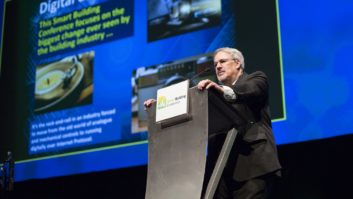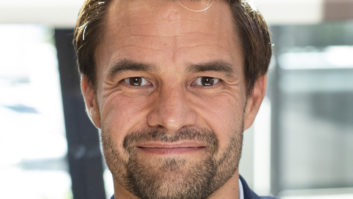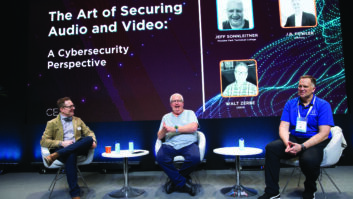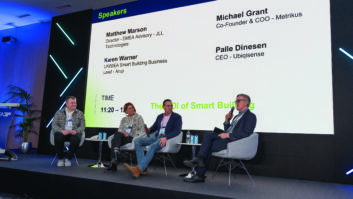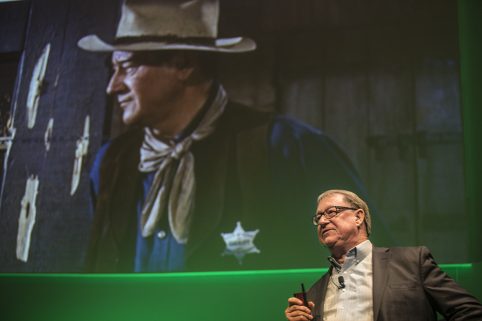
The smart building world is leveraging the power of the Internet of Things (IoT) to transform the way people work, rest and play. That was the message from Smart Building Conference 2017, sponsored by KNX, IBM, SpinetiX and Siemon.
The IoT is a global network of billions of connected devices found in workplaces and homes, from heating, lighting and security systems, to TVs, fridges and baby alarms.
Bob Snyder, conference content chairman, said, “The smart building is already creating cataclysmic disruption and the Internet of Things is adding more disruption on top. That’s why it’s such a big theme at this year’s conference.”
In his morning keynote, ‘The Challenge of a Smart Building is not in the Technology’, Mark S Valenti, president and CEO, The Sextant Group, noted that the IoT offers great opportunities. But he added that “standardisation is complex and confusing to navigate – it’s like the Wild West.”
However, Valenti told the ISE Daily that this shouldn’t stifle the smart building market: “It’s not going to be resolved anytime soon and I don’t think it needs to, because the various standards organisations have different perspectives on the market place, and they are all valid.”
Another keynote speaker, Gabriel Wetzel, vice president for IoT projects and Smart City, Bosch Software Innovations, revealed that his company is planning to launch a new connected building solution in a few weeks’ time, which will focus on equipment monitoring, space management and enabling other players to access the data, in order to develop further solutions.
Charlie Kindel, director Alexa Smart Home, Amazon, delivered the residential keynote, ‘Voice: Breakthrough in Smart Home and IoT’, and described how many consumers are now using Amazon’s voice recognition platform to operate numerous devices around the home, from coffee makers to robot vacuum cleaners.
The closing keynote by Claire Penny, worldwide solution leader, Watson IoT, IBM, ‘This is my Building’s Final Offer’, described how cognitive computing and IoT are combining to create buildings that can learn how people use them, “Buildings are built for people,” she said, “so you have to learn how the building is behaving in response to the people.”
This involves collecting data from sensors and systems, and managing the data to make changes to the environment. “Someone could walk into a building, and using Watson’s voice recognition technology, simply ask for a free meeting room, book it and even set the room temperature.”
Penny also revealed that IBM Research have developed the ‘IoT Brain’, an analytical tool that enables existing buildings to be converted into
smart buildings.

